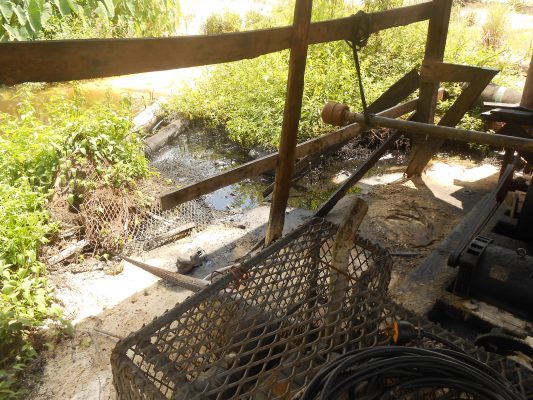By Dale Beresford
A cursory glance at common safety procedures and protocols employed by home owners and small businesses in relation to the protection of their homes and business premises ought to give rise to a healthy degree of worry. Not only are the various safety and health violations clearly apparent, they are, as well, a result of either ignorance of the health and safety regulations, or else, a lack of regard for the occupational safety and health laws of Guyana.
What is apparent is that many businesses in downtown Georgetown and in various other parts of the country pay more attention to maximizing profits than creating a convivial environment for their employees and customers. Contextually, the question that arises is whether or not the business community is sufficiently knowledgeable of their roles and responsibilities under the Occupational Safety and Health Act (32) of 1997 and whether they are in compliance with the provisions of the Act?
Under those provisions employers have a responsibility to provide a safe and healthy working environment, the details of which are spelt out in Sections 46 to 48 of the Act. These provisions pertain to a safe work task including safe and healthy structures and buildings, basic sanitary facilities, approved personal protective equipment, medical examinations for workers and the recruitment of supervisors who are capable of overseeing the effective implementation and maintenance of these facilities and services.

A convivial working environment is not a privilege but a right. Greater knowledge of that right and what it entails empowers the employee to demand that right. In this regard Section 49 of the Occupational Safety and Health Act of 1997 is instructive. There is every reason to believe that there are instances, perhaps many of them, in which workers are being abused through the denial of these rights and are accepting that abuse on account of their ignorance.
The provisions of the Act also allow for workers’ knowledge to be enhanced through employer-sponsored training and sensitization sessions and Workshops. Such exposure should include knowledge on workplace hazards and precautions to be taken in preventing accidents and injuries. Workers also have a right to be made aware of dangers that might be posed by such chemicals and other substances as might be either in use at their places of work or else, otherwise stored on the premises. Workers also have a right to decline to execute what can be regarded as DANGEROUS WORK.

There are standard procedures for these pursuits which ought to be embedded in the workplace Code of Practice. Potential hazards should be brought to the attention of supervisors or managers. Workers have a right not to continue to occupy those premises until such hazards as exist are controlled.
It is not uncommon for proprietors to store hazardous materials in bonds and warehouses while remaining unmindful of the safety regulations and standards associated with this practice. Workers should be made aware of the safety standards associated with the storage of items such as clothing, flammable materials and hazardous chemicals, for example which are stored on workplace premises which have no certification to facilitate such storage. Among these are gasoline, aerosol products, cleaning products and merchandise which emit harmful gases. Many employers simply refuse to follow the directions contained in the Safety Data Sheets accompanying their products. A Safety Data Sheet is a mandatory document that should accompany all products manufactured and distributed and should be clearly legible and in the language of the country in which it is being used. Safety Data Sheets provide information on the chemical composition and harmful effects of products as well as storage and disposal methods and advice on the use of personal protective equipment. Employers have a responsibility to make the information contained in those Safety Data Sheets available to their employees, and have trained Occupational Safety and Health personnel to advise them on protecting themselves against the hazards associated with the materials in question.
The question that arises here is whether there exists any reliable audits on the status of the safety and health standards at business houses across the country and the extent to which, unwittingly, workers may be in imminent danger of exposure to one hazard or another and which may only manifest negative effects sometime in the future. Frankly, there are serious risks associated with allowing this state of affairs to persist without any serious state intervention. Part of the response has to be to ensure that employees acquire the knowledge of their rights under the Occupational Safety and Health Act 32 of 1997. The time is long overdue for employees to demand that employers make safety and health a priority and implement the requisite rules and systems within workplaces. These are investments which, in the longer term, will result in reduction in cost overruns, injuries, accidents and insurance and compensation payouts.
The return on investments in integrating occupational safety and health management systems into workplace protocols is an investment that will reap significant returns down the road. More than that it is the fulfillment of an obligation to workers.
Dale Beresford is an Occupational Safety & Health Practitioner





